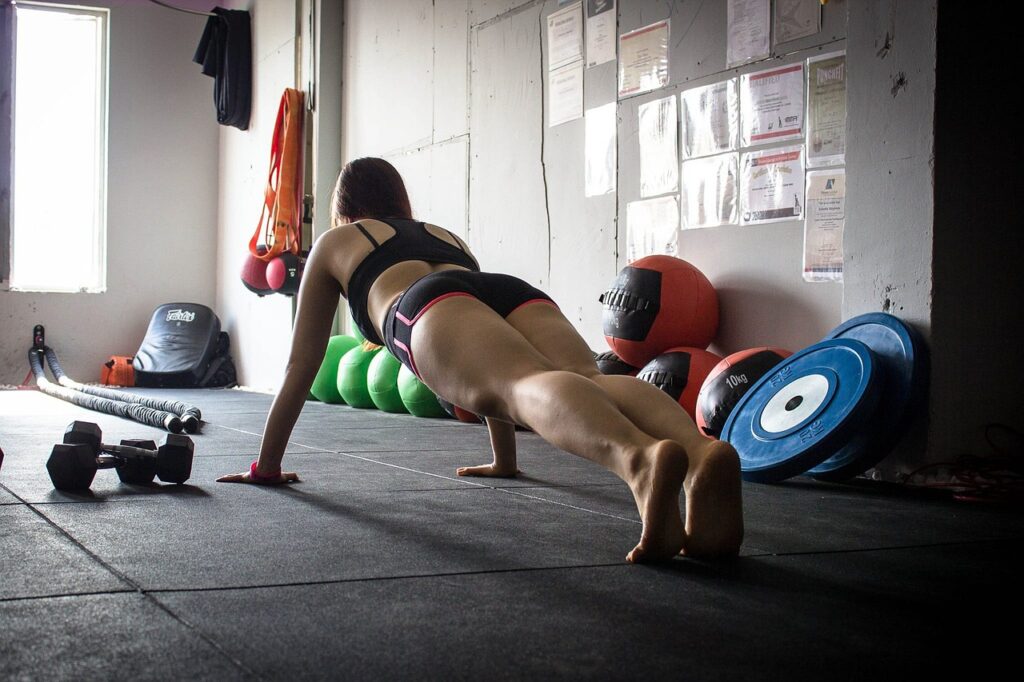Unlock Your Body’s Full Potential

Achieving your fitness goals is about more than just lifting weights or running miles. It’s about understanding how your body moves, what it needs to thrive, and how you can optimize its potential through flexibility, strength, and balance. Unlocking your body’s full potential means tapping into its natural abilities and pushing beyond perceived limits. Whether you’re a seasoned athlete or a fitness beginner, maximizing your body’s range of motion, strength, endurance, and flexibility can improve your overall health, performance, and quality of life.
In this article, we’ll explore how to unlock your body’s full potential by focusing on key areas like mobility, flexibility, strength training, mental fitness, and recovery. Each of these elements plays a vital role in helping you move better, feel stronger, and live a healthier, more active life.
Why Mobility and Flexibility Matter
Mobility and flexibility are often overlooked in fitness routines, but they are crucial for maintaining a healthy, functional body. Flexibility refers to the ability of your muscles to stretch, while mobility is about how well your joints move through their full range of motion. Improving both can enhance performance in every other area of fitness.
Benefits of Improved Mobility and Flexibility:
- Injury Prevention: Tight muscles and restricted joint movement increase the risk of injury. By improving flexibility, you reduce strain on your muscles and joints, which can prevent common injuries like sprains, strains, and joint pain.
- Enhanced Athletic Performance: Whether you’re running, lifting weights, or practicing yoga, better flexibility and mobility allow your body to perform at its best. Increased range of motion leads to more efficient movement, improving power, speed, and endurance.
- Better Posture and Balance: Flexibility and mobility training can help correct postural imbalances, reduce muscle tightness, and improve your overall body alignment, making everyday movements more fluid and balanced.
- Reduced Muscle Soreness: Stretching and mobility work help increase blood flow to your muscles, which can reduce post-workout soreness and speed up recovery.
How to Improve Flexibility and Mobility
Incorporating a few targeted exercises and routines into your daily or weekly schedule can make a huge difference in your flexibility and mobility. Here are some effective strategies:
1. Dynamic Stretching
Dynamic stretching involves moving through a full range of motion with controlled movements that warm up your muscles. This type of stretching is ideal before a workout because it increases circulation and prepares your muscles for activity.
- Examples: Leg swings, arm circles, walking lunges, and hip circles.
2. Static Stretching
Static stretching involves holding a stretch for 20-30 seconds without moving. This is best done after a workout when your muscles are warm and more pliable.
- Examples: Seated hamstring stretch, standing quad stretch, triceps stretch, and butterfly stretch.
3. Foam Rolling
Foam rolling, or self-myofascial release, helps loosen up tight muscles and improve flexibility by applying pressure to specific points on the body. This practice can help reduce muscle tightness and improve range of motion.
- Focus Areas: Hamstrings, calves, quads, glutes, and back.
4. Yoga or Pilates
Both yoga and Pilates are excellent for improving flexibility, mobility, and balance. These practices focus on controlled movements, breathwork, and stretching, which can enhance overall body awareness and mobility.
- Key Poses: Downward dog, cat-cow, pigeon pose, and forward folds (yoga); spine twist, leg circles, and side stretch (Pilates).
Building Strength for Optimal Performance
Strength is the foundation of physical fitness. Strong muscles not only help you lift heavier objects and perform daily tasks with ease, but they also support joint health, improve metabolism, and enhance endurance. To unlock your body’s full potential, you need to build strength in a balanced, sustainable way.
The Importance of Strength Training
Strength training is essential for everyone, regardless of age or fitness level. It involves working against resistance (such as weights, resistance bands, or bodyweight) to build and maintain muscle mass.
Benefits of Strength Training:
- Increased Muscle Mass: Building lean muscle mass helps you burn more calories at rest, making it easier to maintain a healthy weight and body composition.
- Stronger Bones: Strength training increases bone density, which is crucial for preventing osteoporosis and reducing the risk of fractures, especially as we age.
- Improved Joint Health: Strengthening the muscles around your joints helps protect them from injury and supports better overall movement.
- Enhanced Endurance and Stamina: A strong body can perform physical tasks more efficiently and for longer periods without fatigue.
Key Strength Exercises
To build strength effectively, focus on compound movements that engage multiple muscle groups simultaneously. Here are some key exercises to include in your strength training routine:
1. Squats
Squats target your legs, glutes, and core while also engaging your lower back and calves. They are a fundamental movement for building strength in the lower body.
- Variations: Bodyweight squats, goblet squats, barbell squats, and jump squats.
2. Deadlifts
Deadlifts are one of the best exercises for building total-body strength. They target your hamstrings, glutes, lower back, and core, while also engaging your upper back and shoulders.
- Variations: Conventional deadlifts, sumo deadlifts, Romanian deadlifts, and single-leg deadlifts.
3. Push-Ups
Push-ups are a classic bodyweight exercise that strengthens your chest, shoulders, triceps, and core. They can be modified to suit any fitness level.
- Variations: Standard push-ups, knee push-ups, decline push-ups, and wide-grip push-ups.
4. Pull-Ups
Pull-ups target your back, shoulders, arms, and core. They are one of the most challenging upper-body exercises but highly effective for building strength and muscle.
- Variations: Standard pull-ups, chin-ups, assisted pull-ups, and negative pull-ups.
5. Lunges
Lunges are excellent for improving balance and building strength in the legs and glutes. They also engage your core for stability.
- Variations: Forward lunges, reverse lunges, walking lunges, and lateral lunges.
By incorporating these key exercises into your routine, you’ll build functional strength that enhances your performance in both daily life and athletic activities.
Mental Fitness: The Mind-Body Connection
Unlocking your body’s full potential isn’t just about physical strength and flexibility—it’s also about mental fitness. The mind and body are deeply connected, and mental focus plays a crucial role in achieving your fitness goals. Developing mental toughness, improving focus, and reducing stress can all enhance your performance and overall well-being.
The Role of Mental Fitness
Mental fitness involves training your mind to stay focused, calm, and resilient. It helps you push through challenging workouts, maintain motivation, and stay consistent with your fitness routine.
Strategies for Building Mental Fitness:
- Mindfulness and Meditation: Practicing mindfulness and meditation can help you stay present, reduce stress, and improve your mental clarity. These techniques are also useful for managing anxiety and enhancing your mental focus during workouts.
- Visualization: Visualization techniques involve mentally rehearsing your fitness goals or specific movements. Athletes often use visualization to prepare for competitions, but anyone can use it to stay motivated and focused on their progress.
- Positive Self-Talk: The way you talk to yourself during a workout can impact your performance. Encourage yourself with positive affirmations and avoid negative self-talk. This will boost your confidence and help you push through difficult moments.
- Setting Achievable Goals: Break your fitness goals into smaller, manageable steps. Achieving these small milestones will keep you motivated and reinforce your progress.
Recovery: The Key to Unlocking Your Potential
Recovery is often the most neglected aspect of fitness, yet it is essential for unlocking your body’s full potential. After intense exercise, your body needs time to repair and rebuild muscle tissues, replenish energy stores, and reduce inflammation. Without adequate recovery, you increase your risk of injury, burnout, and fatigue.
Importance of Recovery:
- Muscle Repair and Growth: During exercise, your muscles experience small tears. Recovery allows these muscles to repair and grow stronger, leading to muscle gain and improved performance.
- Reduced Fatigue: Proper recovery helps prevent both physical and mental fatigue, keeping you energized and focused for your next workout.
- Injury Prevention: Recovery is crucial for preventing overuse injuries. Taking time to rest allows your muscles, joints, and connective tissues to heal and regain strength.
- Enhanced Performance: Adequate rest improves performance by allowing your body to perform at its best without the limitations of fatigue or soreness.
Effective Recovery Strategies:
- Sleep: Aim for 7-9 hours of quality sleep each night. Sleep is when your body does the most repair and recovery.
- Hydration: Drink plenty of water to stay hydrated and support muscle recovery. Dehydration can slow down recovery and hinder performance.
- Active Recovery: Light activities like walking, cycling, or swimming on rest days can help increase circulation and reduce muscle stiffness without putting stress on your body.
- Stretching and Mobility Work: Incorporate gentle stretching or yoga on your recovery days to maintain flexibility and mobility.
Conclusion
Unlocking your body’s full potential requires a holistic approach that includes flexibility and mobility work, strength training, mental fitness, and proper recovery. By paying attention to all of these aspects, you can achieve better physical performance
